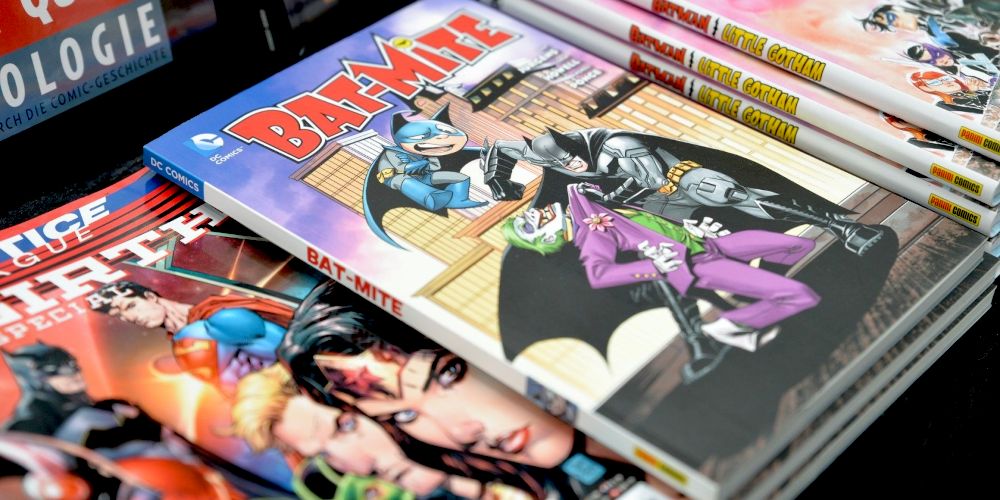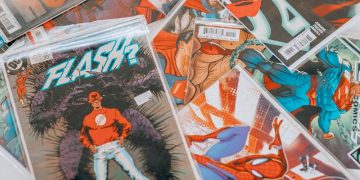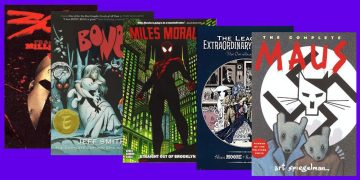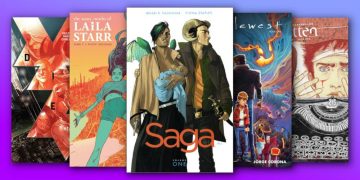If you're like me, you might think that comics and graphics novels are considered the same story-telling format.
But after using the terms interchangeably for years, I've only recently figured out that there are some very distinctive differences between comics and graphic novels.
You don't want to get caught identifying a graphic novel as a comic book (or vice versa) in a book store, do you? That'd be embarrassing, wouldn't it? (Don't ask me how I know.)
Here are the key differences between comics and graphic novels, and what you need to know about each.
A Brief History of Comics & Graphic Novels
As a child, you probably remember reading those short comic strips in the weekly newspaper—Calvin and Hobbes and Garfield are some of the most well-known.
The comic strip has been around as early as the 17th century, first emerging as politically-driven cartoons in Europe.
However, it wasn't until the 19th century, when Swiss schoolmaster, Rodolphe Töpffer, conceived one of the first true comic strips: "The Adventures of Mr. Obadiah Oldbuck." Years later, Töpffer's cartoons would pave the way for the kind of comic strips we know and love today.
In the late 1890s, the New York World newspaper printed "The Yellow Kid," a full-color strip outfitted with speech bubbles and panels. Other newspapers followed suit, leading to the development of the modern comic strip.
But what about actual comic books?
Famous Funnies became the first modern American comic book that was produced on a regular basis.
Unlike comic strips, this series was sold as a separate entity altogether from newspapers. Famous Funnies ran from 1934 to 1955, and set the standard for more well-known comics to come.
From the 1930s to 1950s, which is lovingly known as the Golden Age of Comics, comic books began introducing now-iconic heroes like Superman, Batman, Wonder Woman, the Flash, and the Green Lantern—who are all significant even to this day.
As comic book fans grew older, they sought out more realistic and gritty stories. They also had more disposable income to spend on the kinds of stories they wanted to read.
These factors, along with the advent of dedicated comic book stores, allowed publishers to take more risks.
In the 1970s, the pricier and more mature graphic novel soon hit the shelves, with Will Eisner's A Contract with God, and Other Tenement Stories leading the way.
Comic Books vs. Graphic Novels: What Sets Them Apart?
Knowing the background of comics and graphic novels helps you understand how these books became what they are today. It also makes distinguishing between the two much easier.
In terms of differences, comic books are notably shorter than graphic novels. Comic books are periodicals—they're published monthly, with each edition containing snippets of an overarching story arc that takes months to complete.
You'll also notice that comic books use staples to hold pages together, a binding method known as saddle stitching.
Graphic novels resemble actual books. They come with both hard covers and soft covers, and have a glue-bound spine much like a traditional novel.
That's because graphic novels are longer than comic books, and are much weightier in terms of size and content. Not only can you expect a graphic novel's storyline to end by the time you finish the book, but you'll also see significant character development.
Comic books and graphic novels are both very alike yet very different at the same time.
Both express a story with art—but while comics tend to drag the story out, graphic novels tell an engaging story in a single book.
Comic Books or Graphic Novels?
In the end, one medium isn't better than the other. Both styles have their drawbacks and benefits; it comes down to a matter of preference. The good news is, both have plenty of awesome stories worth reading so there's no need to pick just one!



